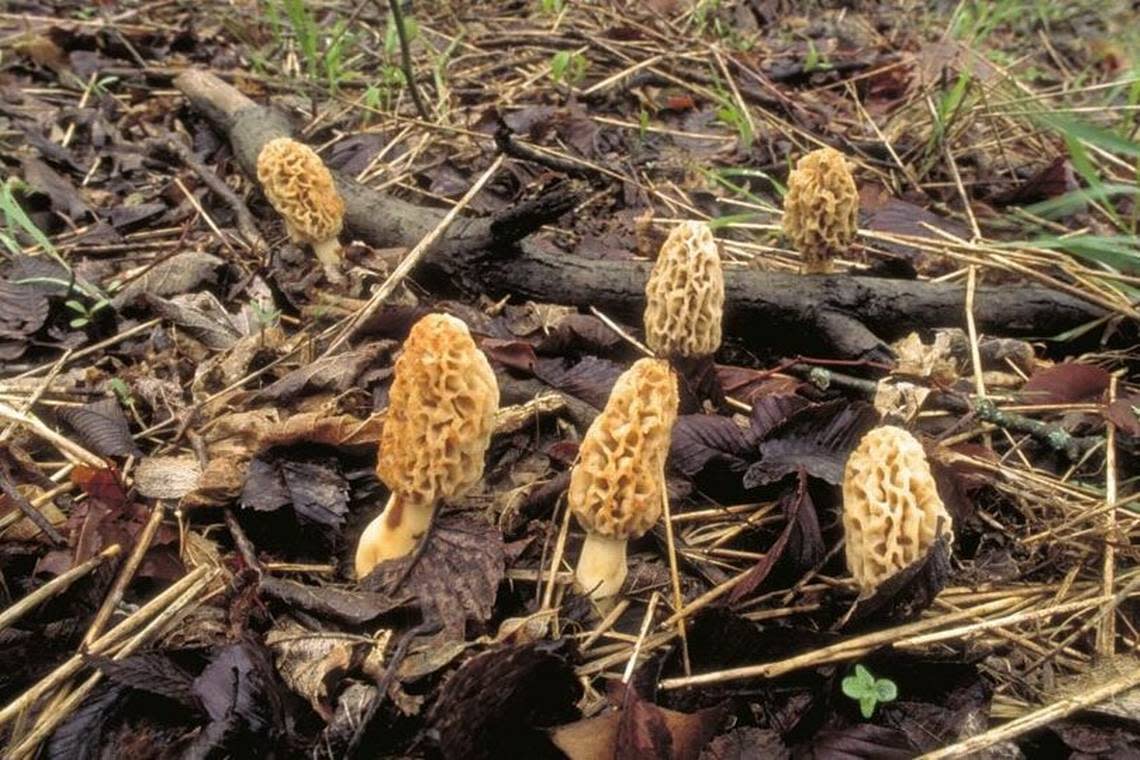Hunting for mushrooms in Kansas? How to identify them and other tips before you dig
It’s that time of year where mushroom patches will start popping up left and right, and while many see them as a lawn nuisance, some people see the opportunity for a hobby.
Mushroom harvesting in Kansas has grown in popularity since the coronavirus shutdown, said Pam Paulsen, Reno County horticulture agent at Kansas State University’s Research and Extension Center.
“I get more questions on it, and we do a training for identifying mushrooms and we’re constantly getting inquiries about that, and we’ve always had a number of people attend them. I think it’s increasing,” Paulsen said.
It’s not just Kansas, either. Good rain and a strong crop has increased interest in mushroom hunting in other parts of the country.
As popularity in the hobby grows, experts are warning those who consume their finds to be extra diligent, especially inexperienced foragers. If you’re newly interested in hunting for mushrooms or just curious about the practice, we’ve rounded up some tips to help you safely harvest.
If you’re new to mushroom harvesting, follow these tips
If you’re trying mushroom harvesting for the first time, Paulsen recommends going foraging with someone who has experience.
It’s also important to know exactly what mushrooms you’re picking and what to look for when harvesting for consumption. She said there are also a number of Facebook pages where you can post photos of a mushroom and people can help identify the variety.
Be sure to verify the type of mushroom you have with an expert source before you consume it, and if you are unsure, do not eat it.
All mushrooms should be cooked before eating, Paulsen said. If it is your first time eating mushrooms, it’s important to be careful. When eating a type of mushroom for the first time, the agent recommends to eat a little bit at a time in case you have an allergic reaction.
“So one mushroom species at a time, and a little bit for the first time,” Paulsen cautioned.
Morel mushroom season in Kansas
Morel mushrooms are the most popular mushroom to harvest in Kansas, Paulsen said.
They are found the most in the eastern part of the state, but they can be spotted elsewhere. Additionally, Paulsen said there are many ways to pick them, and she usually uses a knife.
“Some people will break them off. If you do that, it doesn’t harm them at all. You really want to get all of the dirt off the stem,” Paulsen said.

You can usually pick the mushrooms right when you see them, but you do want to make sure the mushrooms are plump and moist.
“You can tell when they’re starting to get a little over mature, they just look a little bit dried out and discolored,” Paulsen noted.
The best time for morel mushroom season depends on the weather. It’s usually best when daytime temperatures are in the 60s and the nights are in the 50s.
“I’ve seen them early April, usually the second or third week of April,” Paulsen said.
When the temperature gets higher, morel mushrooms can start dying. Mushrooms do the best in moist areas.
Mushroom harvesting types and tips
Paulsen said while most people only harvest morel mushrooms, she recommends other species in Kansas.
Mushroom foraging is also a flexible hobby, and you can go harvesting during every season except winter.
In Kansas, popular mushrooms to harvest include:
Oyster mushrooms can be identified by their oyster-shaped cap and gills that run down the stem.
Lion’s mane mushrooms are one of the most unique looking mushrooms, with no stem or caps. They instead grow in a clump.
Chanterelles are usually yellow in color, but can also be white or red. They tend to be found on forest floors.
Pheasant’s back, also known as dryad’s saddle, usually grows on dying trees and has a light brown pattern.
Inky cap is a small, gray mushroom that grows in a group.
Whenever you’re mushroom hunting, remember to always make sure you know what species you’re picking, as there are multiple mushroom species that are poisonous. If you’re unsure about a type of mushroom, it’s best to throw it out.
When foraging for mushrooms, it’s always handy to have a mushroom identification book. The Great Plains Nature center has a pocket mushroom guide you can get online that has a list of popular mushrooms in Kansas.
You can also get a mushroom identification app, like iNaturalist, to familiarize yourself with safe mushrooms and lookalikes. If you’re a beginner, you should show the mushroom to an expert before eating it.
When foraging, it’s important to do so ethically. When coming across something you want to harvest, don’t take too much and make sure you leave enough behind.
If you want to forage on private property, get the landowner’s permission. For safety reasons, it’s better to avoid busy areas that could have been sprayed with insecticides or other harmful chemicals.
Always remember to clean up the area after you’re done and leave no trash behind.
